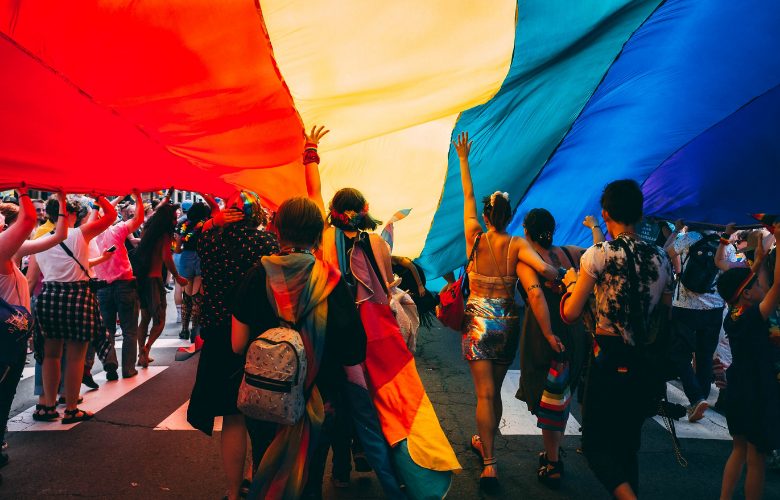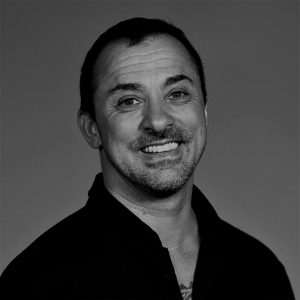
Zurich has a very interesting history regarding the slow integration of the LGBTQ+ community. In many ways, the picturesque Swiss metropolis was way ahead of its time and opened their minds and doors earlier than most places for “fringe” groups. In other ways, they are still way behind today and have, for example, only just last year finally voted “yes” for gay marriage. Here is a little history of what happened in Zurich since the 1940s. And how the LGBTQ+ community helped shape Zurich’s diverse and vivid night life.
Violent homophobia still hits the headlines every now and then in the overall open-minded city of Zurich. Fact is that a large part of the population is still very conservative and Calvinistic in Switzerland.
On the other hand, the town offers considerable equality and diversity. Zurich is a small international marvel. Full of contradictions, opinions, restrictions, and personal freedom.
Everything can be found in the city’s culture and sub-culture. And this has been true for a very long time.
During the Second World War, Zurich became the LGBT capital of Central Europe. Gays from all over Europe headed to the pretty city at the lake as they fled persecution by Nazi Germany.
The face of this early Zurich scene was Der Kreis (The Circle), an association founded in 1943 that quickly turned into a private lending library.
From 1948 onwards, Der Kreis organized huge balls at Theater Neumarkt, attracting international renown with their dance and cabaret performances and their guests’ elaborate costumes.
Up to 800 Kreis members would attend with their guests, some of whom travelled to Zurich specially from overseas.
Der Kreis quickly became an event organizer, complementing its balls with regular dances at the Eintracht am Neumarkt restaurant.
But gays weren’t always welcome. And, for a long time, the city authorities treated them like a thorn in their side.
This meant Der Kreis could no longer stage events at the Eintracht restaurant, and the balls were moved to a smaller town at the outskirts of Zurich, called Spreitenbach.
The authorities’ homophobic policies generally reflected the prevailing mood of the public at that time.
This was significantly influenced by the press, which increasingly described gays, and particularly male prostitutes, as dangerous parasites.
This heated atmosphere led to two murders of male prostitutes in the late 1950s.
The media hailed the perpetrators as heroes and they were acquitted, despite overwhelming evidence.
In parallel, the police began illegally questioning suspected homosexuals to place them on a gay register.
But, even facing adversity and persecution, the gay scene remained vibrant in Zurich.
The Barfuesser, which opened in 1956, had a key role to play.
The Barfuesser wasn’t considered a dance hall. So, it avoided the ban on men dancing together.
The Barfuesser quickly became a popular meeting place for anyone and everyone – homosexual women and men of all ages, transvestites, heterosexuals, bisexuals and later the Lederkerle, a leather fetish group.
The ban on men dancing together was tacitly lifted in 1966 when the Conti Club opened on the top floor of Koechlistrasse in Zurich’s district 4.
Now it was just the neighbours who were openly hostile to the gay club and complained about excessive noise.
The club decided to defuse the situation by inviting the whole neighbourhood to look around the club and have a bite to eat.
This proved to be a good way of clearing the air. And today the Bar & Club Commission Zurich still adopts this approach as part of the Open Bar and Club Day.
In 1971, a group of gay students opened a venue called Zabriskie Point, named after a popular hippie movie of the time. They were not just interested in music and dancing – they also had a political agenda.
They called for a new, more liberal mentality and took bold steps to make gays more visible in society.
The students founded the Homosexual Working Groups Zurich (HAZ). It operated out of the Zabriskie Point. However, they knew full well that a long, hard road lay ahead.
The first big step towards a new, more liberal mentality was the first demonstration held on Christopher Street Day (CSD) in 1978.
The clear objective of this demonstration was to make the police dissolve its gay register.
From then on, Christopher Street Day quickly developed into a vibrant parade that increasingly attracted people who normally had nothing to do with the LGBT community.
CSD became one of the scene’s most important PR tools.
Throughout the 80s, apart from a handful of events, a few dimly lit pubs, and the city’s public parks, gays still had very few places where they could meet.
So, in 1987, the T&M club was opened in Zurich’s Niederdorf (the old part of town).
The advent of AIDS once again brought social ostracism during that time. There was even a public debate about whether AIDS patients should be forcibly tattooed and put on isolation wards in Switzerland.
Against this backdrop, it was a brave step to open a gay club in the city centre.
T&M got its name from two drag queens, Tamara and Marisa. When the club opened, it provided Zurich’s gays with a long-awaited sense of liberation.
They finally had a refuge. A spacious, colourful flagship for the gay scene.
The drag queen shows proved to be a huge hit. Increasingly attracting straight people to the T&M as well. T&M provided a safe haven at a time when gays were still being openly discriminated.
In 1999, Aaah was added to the top floor of T&M. It was primarily a dark room – people could hook up at the T&M and then go to Aaah to get down to business.
A niche party scene evolved in the early 1990s, starting with the Gay Night Company in Zurich’s industrial zone.
The focus was on the electronic house music which back then slowly conquered Europe from its beginnings in Detroit.
Gays and transvestites were also often to be found at house parties at the Flamingo.
In 1993, the Labyrinth opened as an underground club. The name comes from the fact that the first Labyrinth opened in a labyrinth-like cellar near Albisrieder square close to the center of town.
Over time, the club moved further to the outskirts of Zurich.
Nowadays, annual Flower Parties are organized at Hive club.
The Profitreff on Sihlquai, next to the river in the center of town, has been hosting Wednesday-night gay parties since the mid-nineties.
One of its initiators, Andre Odermatt, is now a member of Zurich’s city council.
The Cranberry bar arrived in Niederdorf in 1997 and has become one of Zurich’s gay institutions, partly thanks to its excellent cocktails.
The Heaven club opened in March 2013 and soon began attracting crowds by taking the drag shows that were already popular at T&M and giving them a new look in formats like Drag Race.
Many other venues across town also organize parties, helping to continue the ball tradition started by Der Kreis.
Now 25 years old, Tanzleila is the oldest party format in Zurich. But it still guarantees a great night out for women only.
Not just in terms of content and music. The operators of the former Labyrinth club were key members of a group that exposed the corrupt city official Raphael ‘Don Raffi’ Huber in the 1990s, paving the way for the liberalization of Zurich’s night life.
Gay parties were also at the forefront of new trends. And they were the first places to play house music and hip-hop.
Quite simply, homophobic clubbers have no idea where the culture they seem to love so much actually began.
It is up to every one of us to stand up to violence and hate in Zurich’s night life scene. And to violence and hate in every night life scene in every city on Earth for that matter!
Diversity is not something to be afraid of. Rather it is a gift and a privilege.
It is a core trait of what it means to be human.
Many thanks to Alexander Buecheli, night life columnist at hellozurich.ch, who wrote the original article “How queers have shaped Zurich’s nightlife”
Diversity, Equality, Inclusion, and the LGBTIQ Agreement
Les Farfadais: When Circus Art Changes The World


Liam Klenk was born in Central Europe and has since lived on four continents. Liam has always been engaged in creative pursuits, ranging from photography and graphic design, to writing short stories and poetry, to working in theatre and shows. In 2016, Liam published his first book and memoir, 'Paralian'.
Read Full Profile© 2021 TheatreArtLife. All rights reserved.

Thank you so much for reading, but you have now reached your free article limit for this month.
Our contributors are currently writing more articles for you to enjoy.
To keep reading, all you have to do is become a subscriber and then you can read unlimited articles anytime.
Your investment will help us continue to ignite connections across the globe in live entertainment and build this community for industry professionals.